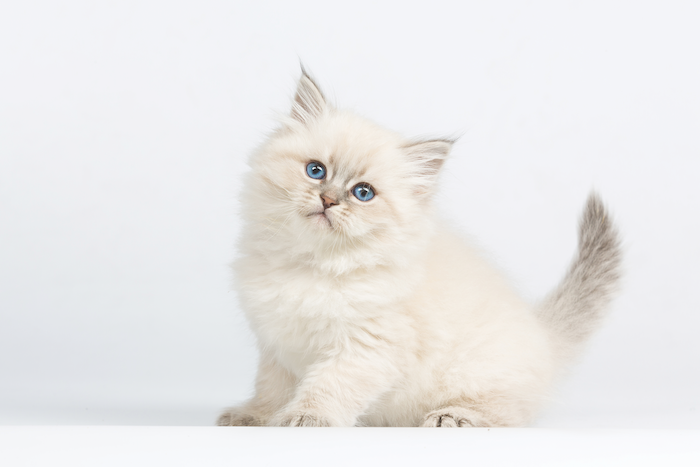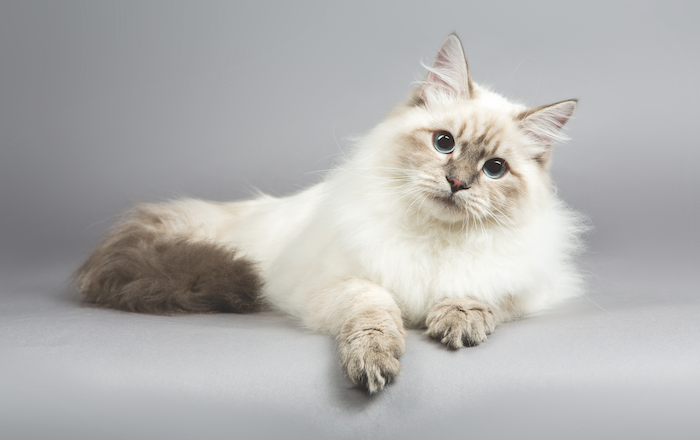Everything You Need to Know About Siberian Cats
The post Everything You Need to Know About Siberian Cats by Stacy Hackett appeared first on Catster. Copying over entire articles infringes on copyright laws. You may not be aware of it, but all of these articles were assigned, contracted and paid for, so they aren't considered public domain. However, we appreciate that you like the article and would love it if you continued sharing just the first paragraph of an article, then linking out to the rest of the piece on Catster.com.
When you initially hear the name “Siberian,” you might picture a cat that comes from the cold, harsh region of Russia of the same name. You wouldn’t be far off in your imagining. “The name says it all,” says Summer Joy Moffitt, a Siberian breeder from California. “Siberians are fairly common in Russia, and there is evidence of the breed’s existence back to a thousand years ago or more.”
Considered a national treasure in Russia, Siberians appear in Russian children’s books and are mentioned in Russian fairy tales. The cats also appeared in Harrison Weir’s 1889 book, Our Cats and All About Them. With the end of the Cold War in the late 20th century, the cats were finally able to come to America.
After the breed arrived in the United States in the 1990s, the Siberian cats quickly won over fans. In 2006, the Siberian received championship status in the Cat Fanciers’ Association. Who could resist the cats’ plush coats, friendly personalities and overall zest for life?
Warm winter wear
The good looks of Siberian cats definitely draw second glances. Similar in appearance to the Norwegian Forest Cat, Maine Coon and even the wild Pallas cat, the cats boast a plush triple coat designed to keep them warm and dry, even in the coldest and wettest climates. The coarse outer coat repels water, while the two softer inner layers help trap air to keep the cats warm (and survive the cold Siberian winter).
And while the Siberian’s long-haired coat serves a definite purpose, it does so with style. The thick coat is enhanced by full britches, a bushy tail and a ruff around the cat’s neck. The fluffy layers of fur help contribute to the cats’ appearance of roundness, with no hard edges or angles.
“Siberians are very active and tend to be very good thinkers and problem solvers.” “These traits tend to shine through in interesting ways that are very specific to the individual cat.”
Adding to the appeal of the Siberian’s coat is its range of possible color combinations. The breed comes in “almost any possible color or pattern, from points to torties to tabbies and solids,” Summer says. All these colors can appear with or without white markings on the cat’s face, chest, feet and tail.
Regular grooming of a Siberian’s beautiful coat helps prevent the issues typically associated with long fur. Summer recommends brushing a Siberian every week to prevent mats and knots from developing, but she says that some Siberians provide enough fastidious care of themselves to not need help from their owners.
Many other features add to the cats’ visual appeal, including their small, rounded ears (with less surface area to release heat) and tufts of fur between their toes. Like their coats, the eyes of Siberian cats can vary in color, ranging from gold to green to blue, with some cats even being odd-eyed (each eye being a different color). Siberians also enjoy the benefits of having strong, muscular bodies that allow them to participate in active, enthusiastic play and jump up to the highest perches in the house.
Sociable supervisor
From those high spots, Siberian cats can engage in one of their favorite activities: supervising the daily happenings in their homes. The outgoing, curious cats love to be in the middle of everything and will often leave their lofty vantage points to join in any and all activities. Making dinner? They’ll watch closely from the top of the refrigerator. Folding laundry? They’ll jump in the basket to help sort the socks.
The clever cats enjoy all types of playtime, too. Intelligent and inquisitive, the Siberian enjoys playing interactive games with family members, everything from “peek-a-boo” to fetch. Some other favorites include wand toys, laser pointers and other high-activity items that allow the cats to stay physically active. Their acrobatic nature can prove very entertaining, as they may turn somersaults or perform amazing jumps to capture their favorite toys.
“Siberians are very active and tend to be very good thinkers and problem solvers,” Summer explains. “These traits tend to shine through in interesting ways that are very specific to the individual cat.”
When playtime is over, though, Siberian cats love to curl up with their people. Fans describe the cats as devoted, constant companions in tune with their owners’ emotions. The sweet cats will snuggle just when their people need them the most and express their support through soft mews, chirps and, of course, rumbling purrs.
Soft-spoken by nature, Siberians still use their voices and seem to respond to each family member with a special trill or meep just for that person. The cats love spending time with people of all ages, as well as other pets and fellow cats. They fit in well with all types of households and adjust easily to the pace of the home, being equally content in a quiet, staid environment as in a home where life carries on a bit more frenetically.
Read Next: 7 Hypoallergenic Cat Breeds for Cat Allergy Sufferers
The post Everything You Need to Know About Siberian Cats by Stacy Hackett appeared first on Catster. Copying over entire articles infringes on copyright laws. You may not be aware of it, but all of these articles were assigned, contracted and paid for, so they aren't considered public domain. However, we appreciate that you like the article and would love it if you continued sharing just the first paragraph of an article, then linking out to the rest of the piece on Catster.com.






Post a Comment